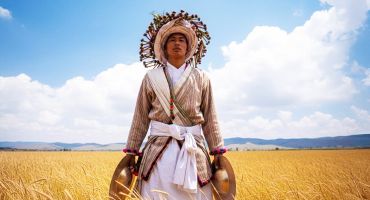It is said that Sumnima created five plants on earth to benefit mankind and to conduct rituals (Hangcha Kupma).
- Ghungring (Poaceae),
- Kaulo (Machilus),
- Amliso (Thysanolaena maxima/Tiger grass),
- Titepati (Mugwort)
- Katus (Castanopsis)
These were each created to serve specific purposes. The Katus plant holds great significance in the protection of people from evil spirits but it is also said that the tree holds such power that sometimes any spirit can be warded off in the presence of a twig or even a leaf of a Katus tree. Most Mangpas cannot find a state of trance if a person closest to him is carrying a Katus leaf or a twig.
In the saga of Khakchulip/Hetchakuwa,when the sisters (Tayama/Khiyama) are finally reunited with Khakchulip, their long lost brother, they dance around a Katus tree. Their jubilance is also based on the fact that they find their brother alive (whom they had thought was dead) and therefore the tree is symbolic as the tree of life. While they dance, they say, ‘’We have trodden on our Maiti, now we raise the head of the Maiti (Sayachongma)’’. In this context, the significance and symbolism of the Katus tree extends greatly.
The Kirat Mundhum places great importance on Katus. It says that living or dead spirits can be lost in its presence and the plant can be used to purify a person in times of great difficulty or ill health. The twigs of the plant can also be used as a medium to communicate with the ancestors in the spiritual realm. During Sakela or any ritual, when the Kirati Khambus are doing the Sili (Dance), the whole atmosphere is open to spiritual energies. At such times, the whole attention of the spiritual realm is focused on the Sili and it could either please or aggravate the spiritual energies. The spirits, in a state of trance could enter the body of any dancer. It is to avoid such mishap that one can see Sili dancers carrying twigs of the Katus tree while dancing.





Leave a Reply